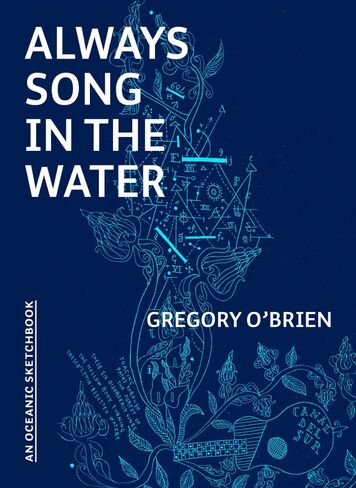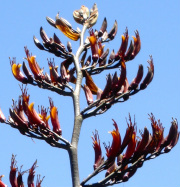
by Gregory O'Brien
This is a coffee-table book, given the smaller perimeter dimensions are not the usual for such.
But the lavish artwork, photography and page quality all qualify as one, as does the somewhat laid-back dip-your-toes-into-anytime quality the tome emanates throughout.
The pages are divided into two parts. Both rambling through and across the author’s historical travelling adventures up North (of Aotearoa New Zealand) in the first, more readable as more sequential section, while the more discursive second section adumbrates his several escapades offshore of what we generally envisage as this skinny country. The latter includes his life-changing voyaging to its further dominions, such as the Kermadecs: Raoul Island in particular.
Water, water is indeed everywhere and there is plenty to imbibe in all the aquatically-drenched references, sketches, paintings, poems, quotations, reflections, droll anecdotes, quirky descriptions, name-drops as pertaining.
O’Brien’s main, significant thesis is that this country is far more than its two island plus cartographic designation and rather contains a much more massive sea mass, which
s t r e t c h e s well beyond our usual ken and which calls for a far wider ontological and environmentally-friendly orientation, even beyond this country. In disturbing our metaphysics of place via this heady concoction of visceral quick snapshot-like sections, he has us ingurgitating on a whole new cocktail, best summed up in his own words,
Instead of drawing a hard and fast line around Aotearoa New Zealand, the realm might be the start of a great opening out and enlargement, an immense fluidity and state of flux, with ‘meeting and parting’ aplenty…then we can continue outwards towards an encompassing, embracing notion of broader Oceanic identification.
His is not a new thought, being already set forth by Alice Te Punga Sommerville in her excellent Once Were Pacific (2012) and obviously experienced, of course, by my own tupuna as they travelled in Tokomaru waka towards these shores so many years previously. But it remains a worthwhile lodestar with which to sail into our global futures together. Indeed, O’Brien’s print and paint paean is suffused in religiosity, so that by the end of this rather weighty sermon of over 270 pages, he quotes Blake and concludes, ‘That all humanity’s endeavours, on land as on sea, might be prefaced by such a statement.’ Namely - ‘everything that lives is holy.’
Including – among a ramshackle raft of others - Dargaville, Ralph Hotere, the Chathams, John Pule - and Marilyn Monroe, who floats a quirky lap or three.
So, go on take the plunge. If you can find the funds, this book swims rather well.

 RSS Feed
RSS Feed
